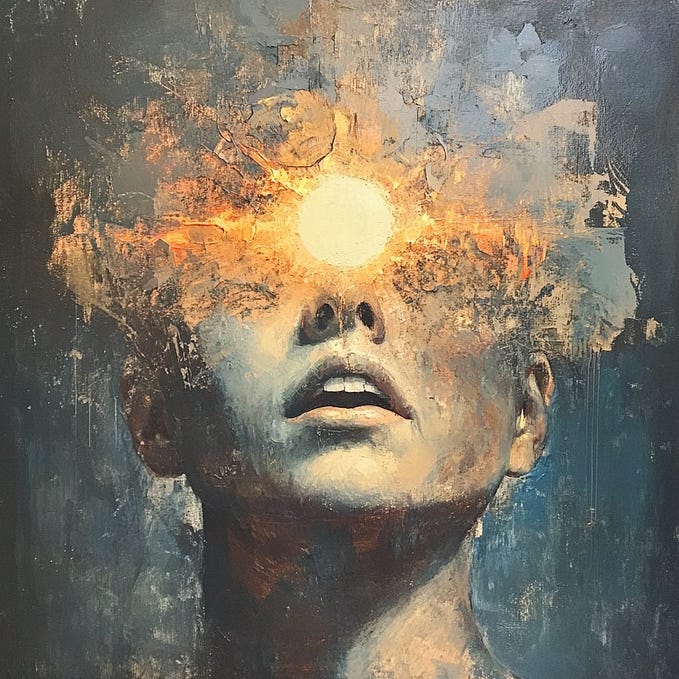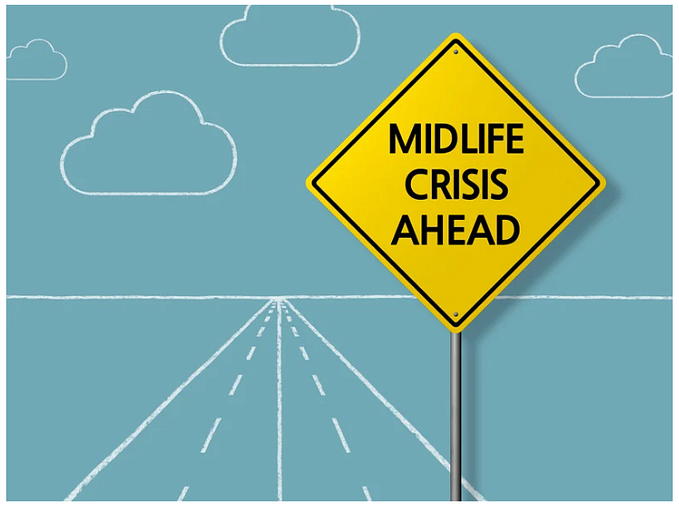How to Tell a Funny Story That Turns Desire Into Action
Making Batman Moonshine From the Go Get

My last post focused on the You Need component of a story — establishing who you are, what you wanted and why you wanted it. I wrote that last post a year ago, promised a followup and then went silent for an entire year.
I feel like a wizard who started a quest, fell into a pit and fought a few Balrogs and now I’m a whole different wizard — but still on the quest, reinvigorated by Gary Gulman’s comedy tips.
Now I’m back and I’m here to talk about the Go Get part of a story. In a 3-act structure framework, the Go Get is Act 2. It’s your own quest, the long road through the forest and all the trolls you fight on your way to the big dragon.
I’ve drawn my story diagram below as a refresher, and it may be worth revisiting this post, too.

GO GET IS ABOUT THE FULFILLMENT OF DESIRE
Stories are about desire. They’re about wanting something so badly that you have to Go Get it. See that circle in the drawing up there, where the story arc meets the line between Act 1 and Act 2?
That circle represents the part in your story where all of the potential energy generated by who you are and what you want converts to the kinetic energy of storytelling action. That’s the point where you want what you want so badly that you can’t help but go after it — and fulfill that desire.
Buddhism is about the elimination of desire as a means to reduce suffering. Buddhists are patient, generous, and their stories are terrible.
Without overwhelming desire, there’s no Go Get.
A good Go Get is how you went about getting what you wanted — and either failed to get what you wanted or got what you wanted and it wasn’t at all what you thought it was going to be.
If your Go Get ends with getting what you wanted, you have two ways to play it to keep the story interesting:
- You got what you wanted and it’s not at all what you thought it would be.
- You got what you wanted but it turns out you can’t handle it.
For example:
- You wanted to go to the biggest party of your high school life with the gorgeous and popular head of the cheerleading squad, only to discover that she likes beer too much and doesn’t respect your boundaries.
- You wanted to go to the biggest party of your high school life with a handsome and popular pre-law student, and you go and he’s gentle and considerate and really likes you for who you are but you experience real fireworks and chemistry with his mom.
CHECK OUT THIS STORY AND TRY THIS EXERCISE
Gastor Almonte took one of my classes a few years ago, and managed to get the story that we worked on in class onto Comedy Central’s “This Is Not Happening.” The story is a classic in and of itself, and it’s also an excellent demonstration of the You Need Go Get Return principle in action.
Try this at home: get out a notepad and draw my little story arc from above.
Now, watch Gastor’s story. Pay attention to the You Need moments in Act 1 and write down the Go Get moments in Act 2. For this exercise, I want you to see how he goes after what he wants, but in order to do that you need to see who he is and what he wants in the first place.
That’s how closely the You Need and Go Get are linked. A Portuguese man o’ war looks like one thing, but it’s actually a colony made up of seven different animals. Stories work the same way.
I’m going to give my interpretation of Gastor’s Go Get below, but do yourself a favor and try this before you scroll down and read any further. Doing it and thinking for yourself will cement this so much more clearly.
Also, don’t get so focused on this that you forget to enjoy yourself!
Here’s how I’d diagram it:

The Go Get starts at “why don’t you be Batman” and ends around “a superhero’s life is never easy”.
You’ll see that there are challenges along the way that Gastor didn’t anticipate. A solid story doesn’t have “I needed to become Batman so I got the suit, fought a few crimes and then boom, problem solved” as its Go Get.
This part is the seat of the story’s conflict. It’s the journey where you directly engage with the mission and encounter hidden obstacles along the way — all kinds of mini-conflicts that complicate things.
When Gastor’s dad says “why don’t you be Batman,” we know that there’s no turning back for Gastor. He becomes Batman, but then he’s scared of the laughing Joker and gets in over his head with the local drug dealers. And once he fully became Batman, the responsibility of it was more than he could take.
In the mission to hunt Osama Bin Laden, Navy SEALS did not just take the bus to OBL’s house dressed up like FedEx, ring the doorbell and pop him when he answered.
They had to
1) fly in the dead of night
2) into another country’s airspace
3) in a super top-secret helicopter
4) escape the helicopter when it crashed in OBL’s yard
5) work their way through the building, murdering the whole time
6) kill Osama Bin Laden
7) gather up all his hard drives with his massive porn collection on them
8) blow up the crashed helicopter to keep the technology secrets safe
9) get onto a different helicopter and fly home
That’s a hell of a Go Get.
USING A GO GET TO DEVELOP A STORY
When I’m telling a story to an audience, the first part I tell is the You Need, and it’s the most important part. But when I’m developing a story, I start working with a Go Get, dig the You Need out of it, then put it at the front.
For example: If something funny and compelling happens and I call my girlfriend at work to tell her and then my best friend from home and THEN my dad even though we just talked on Sunday — that’s something my heart’s involved in and it means something to me.
I know I’ve got something good on my hands if a few of these people say “well, what happened next?”
If I can get my therapist to laugh about it, I’m really on the right track.
If you tell an anecdote to 5 different people that know you and they laugh and ask “well what happened next,” then you’re heating up.
Sometimes people don’t respond well and you just can’t drop it. If you tell your anecdote to three coworkers in a row and none of them laugh or really seem interested but you tell three more people anyway, you’ve also got something that you really care about. Your heart’s really in the thing and you shouldn’t give up on it, but you need to figure out and clearly articulate why it’s so important to you.
The disconnect between your passion for the anecdote and the response could be a few things:
1) a sign that you need to flesh out a You Need more to clarify that for your audience and make them care the way you do
2) a sign that your coworkers are a bunch of duds
3) a sign that something about the way you approached your quest is less than completely relatable or likable. Count yourself lucky that you didn’t earn a trip to HR and try the bit at an open mic to see what happens.
This can be really difficult to figure out, and it’s why most great performers are kind of crazy.
Those little stories we repeat to our friends are the core of a great story, but they’re not a story that’s ready for an audience yet.
Your friends already know who you are and what makes you tick, so they’re laughing right along when you tell them about your wacky run-in at the DMV or whatever. An audience that doesn’t know you needs you to show them who you are and what you want.
If you make that really clear there’s pretty good chance they’re gonna like the DMV story too. Try taking the story you tell your friends and placing it in the Act 2/Go Get part of the story arc above. Then treat the formula like an algebra problem and solve for You Need.

DON’T TAKE THE RULES TOO SERIOUSLY
The very best people that do this sort of thing don’t really think about this that much. This stuff is somewhere back in their lizard brains and while it’s very present, it’s a reflex.
These tips don’t work like a recipe, where you mix eggs and flour and then bake a cake. They’re more of a process, like making moonshine.
You start with a bunch of wet corn and let it sit in the sun for a while and then run it through a series of filters to strain all the dead bugs and leaves out and add in some old fruit and eventually you’ve got a product that’s all your own.
My point here: if you want to make whiskey, you gotta start with wet corn. Your anecdotes are your wet corn, but if you keep refining them you’re gonna get some real lightning.
In my next post, I’ll get into the RETURN part of the five-point structure. Subscribe now if you wanna see that the second that it comes out. I also have a mailing list, if you’re inclined.
I wrote some other stuff about storytelling that you may want to check out here:
This Ice Cream Will Heal Your Heartbreak: How to Find Your Story’s ‘North Star’
How to Structure a Funny Story
This Is A Boring Shark Attack: 8 Rules for Fascinating Storytelling









